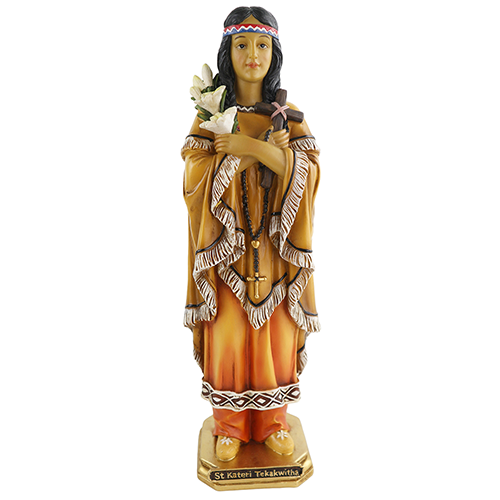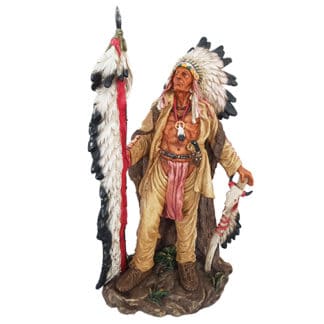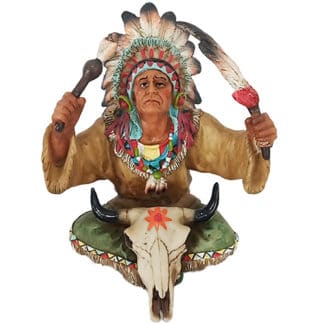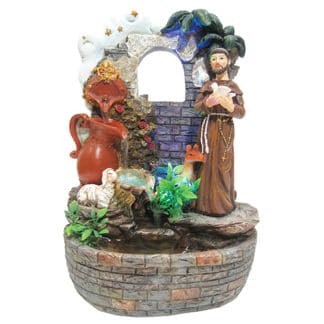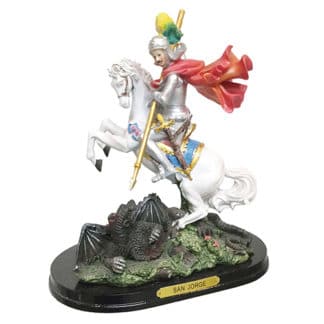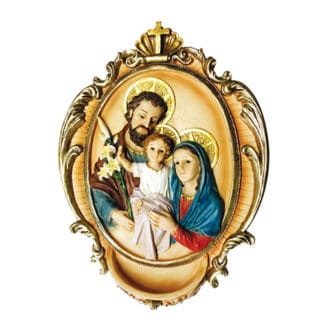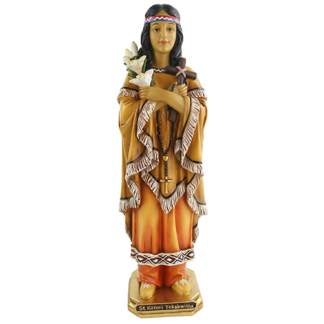Description
Early life and education
Sculpture of Saint Kateri Tekakwitha
Tekakwitha is the name the girl was given by her Mohawk people. It translates to “She who bumps into things.”[7] She was born around 1656 in the Mohawk village of Ossernenon in Northeastern New York state. A nineteenth-century claim that Auriesville developed at the site of Ossernenon has been disproved by archeological findings, according to Dean R. Snow and other specialists in Native American history in New York.
She was the daughter of Kenneronkwa, a Mohawk chief, and Kahenta, an Algonquin woman, who had been captured in a raid, then adopted and assimilated into the tribe. Kahenta had been baptized Catholic and educated by French missionaries in Trois-Rivières, east of Montreal. Mohawk warriors captured her and took her to their homeland. Kahenta eventually married Kenneronkwa. Tekakwitha was the first of their two children. A brother followed.
Tekakwitha’s original village was highly diverse. The Mohawk were absorbing many captured natives of other tribes, particularly their competitors, the Huron, to replace people who died from warfare or diseases such as measles and chickenpox. While from different backgrounds, such captives were adopted into the tribe to become full members and were expected to assimilate as Mohawk fully.
The Mohawk suffered a severe smallpox epidemic from 1661 to 1663, causing high fatalities. When Tekakwitha was around four years old, her baby brother and both her parents died of smallpox. She survived but was left with facial scars and impaired eyesight. She was adopted by her father’s sister and her husband, a chief of the Turtle Clan. Before the epidemic, in 1659, some Mohawk had founded a new village on the north side of the river, which they called Caughnawaga (“at the wild water” in the Mohawk language). Survivors of Ossernenon moved to that village.
The Jesuits’ account of Tekakwitha said that she was a modest girl who avoided social gatherings; she covered much of her head with a blanket because of the smallpox scars. They said that, as an orphan, the girl was under the care of uninterested relatives. According to Mohawk practices, she was probably well taken care of by her clan, her mother and uncle’s extended family, with whom she lived in the longhouse. She became skilled at traditional women’s arts, which included making clothing and belts from animal skins; weaving mats, baskets, and boxes from reeds and grasses; and preparing food from game, crops, and gathered produce. She took part in the women’s seasonal planting and intermittent weeding. As was the custom, she was pressured to consider marriage around age thirteen, but she refused.

